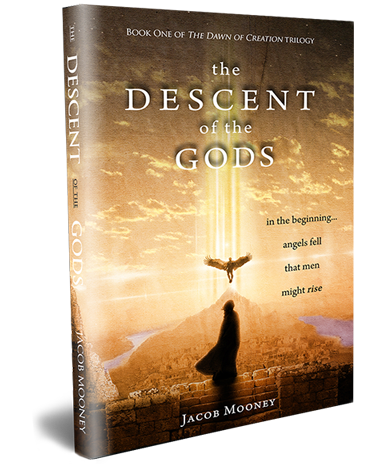
The Damascus Document, also known historically as the Zadokite Fragments, stands as one of the most significant sectarian texts from the Second Temple period. Discovered first in the Cairo Geniza in 1897 and later in multiple fragments among the Dead Sea Scrolls at Qumran, this document provides crucial insight into a Jewish community that saw itself as a faithful remnant in the face of national apostasy.
The text outlines the beliefs, laws, and history of a group that viewed mainstream Judaism—especially its priesthood and temple practices—as deeply compromised. These separatists were likely aligned with the Essenes, or at least with one of several “Enochic” reform movements that emphasized strict observance of the Torah and apocalyptic expectation.
Among the document’s fascinating features is a brief but striking allusion to the Watchers—the angelic beings known from Genesis 6:1–4 and the Book of Enoch—who descended to earth and sinned. The Damascus Document affirms the angelic interpretation of the “sons of God” and even expands on their fate.
The Watchers and Their Giant Sons
In a moral exhortation to its readers, the Damascus Document provides a stern warning rooted in biblical and extra-biblical history. It recounts how powerful beings were corrupted by pride and lust:
“When they went about in their willful heart, the Guardian Angels of Heaven fell and were ensnared by it, for they did not observe the commandments of God. Their sons, who were as tall as cedars, and whose bodies were as big as mountains, fell by it. Everything mortal on dry land expired and became as if they had never existed, because they did their own will, and did not keep the commandments of their Maker, until finally His anger was aroused against them.”
(Damascus Document 2:16–19; Dead Sea Scrolls: A New Translation)
This account mirrors and condenses themes from the Book of Enoch and Genesis 6, casting the Watchers as rebellious “guardian angels” whose descent into sin led to the birth of giants—massive beings who themselves fell due to the same transgressions. These giants are described in hyperbolic terms, “as tall as cedars” and with bodies “as big as mountains”—images evoking power corrupted and ultimately destroyed.
The document connects these events directly to the Flood, seeing it as divine judgment for both the angels and their unnatural offspring. This inclusion reflects a strong Enochic worldview, even though the document itself doesn’t rely heavily on Enochic texts.
Background: What Is the Damascus Document?
The Damascus Document is divided into two main sections:
- The Admonition – a historical and theological prologue that lays out the community’s origins, their separation from mainstream Judaism, and the eschatological warnings for those outside their covenant.
- The Laws – a set of halakhic rules concerning community life, purity, oaths, Sabbath observance, and punishment.
The text mentions a cryptic but central figure known as the Teacher of Righteousness, believed by many scholars to have led this movement after a period of aimlessness. His role is reminiscent of an inspired prophet-priest who restored the group’s understanding of God’s law.
While the group accepted marriage and private property—distinguishing them from the more celibate, communal Essenes of Qumran—they saw themselves as heirs of a “New Covenant” based on strict Torah fidelity and hidden knowledge revealed by God.
Theological Significance
The reference to the fallen angels and their giant sons is more than historical recounting—it is a polemic against disobedience. In the Damascus community’s worldview, the Flood wasn’t just about human wickedness; it was about cosmic rebellion. By referencing these ancient sinners, the text aligns its own warnings with the catastrophic downfall of the pre-Flood world.
The passage also reflects a shared apocalyptic imagination among Second Temple Jews. Like 1 Enoch, the Damascus Document positions the rebellion of heavenly beings as a critical turning point in world history—one that continues to serve as a warning to the present.
Distinct from Enoch—and Yet Related
While both the Book of Enoch and the Damascus Document present the “sons of God” as angelic beings, their tone differs. Enoch expands the narrative with vivid visions, names, and the complex moral implications of angelic knowledge. The Damascus Document is leaner, using the story as a didactic warning.
There is no mention of forbidden knowledge passed to humans, as in Enoch. Nor is there a catalog of angelic names or elaborate punishments described. Instead, the Damascus community focuses on the moral failure—“they did their own will”—as the essence of their fall.
Scholarly Context
Scholars such as Gabriele Boccaccini view the Damascus Document as a “bridge text”, linking mainstream post-exilic Judaism with emerging sectarianism. Its Enochic angelology and its covenantal rigor place it firmly within the family of texts that anticipated apocalyptic judgment and the restoration of a purified Israel.
The Qumran fragments of the Damascus Document also show overlap with the Community Rule, suggesting either evolution within the group or separate branches with shared origins.
Conclusion
The Damascus Document provides a rare and valuable glimpse into how ancient Jewish sectarians interpreted the enigmatic events of Genesis 6. To them, the sins of the Watchers were not myth but history—warning signs of what happens when even celestial beings disregard God’s commandments.
Through its sober, legalistic tone, the Damascus Document calls every generation to resist “willful hearts” and “lecherous eyes.” And by recounting the fall of the giants, it reminds readers that no power is too great to escape God’s judgment—unless repentance comes first.
More information
From The Dead Sea Scrolls: A New Translation, by Michael Wise, Martin Abegg, and Edward Cook (rev. ed., Harper San Francisco, 2005). (4) The Damascus Document (CD) (2005) | Edward Cook – Academia.edu






